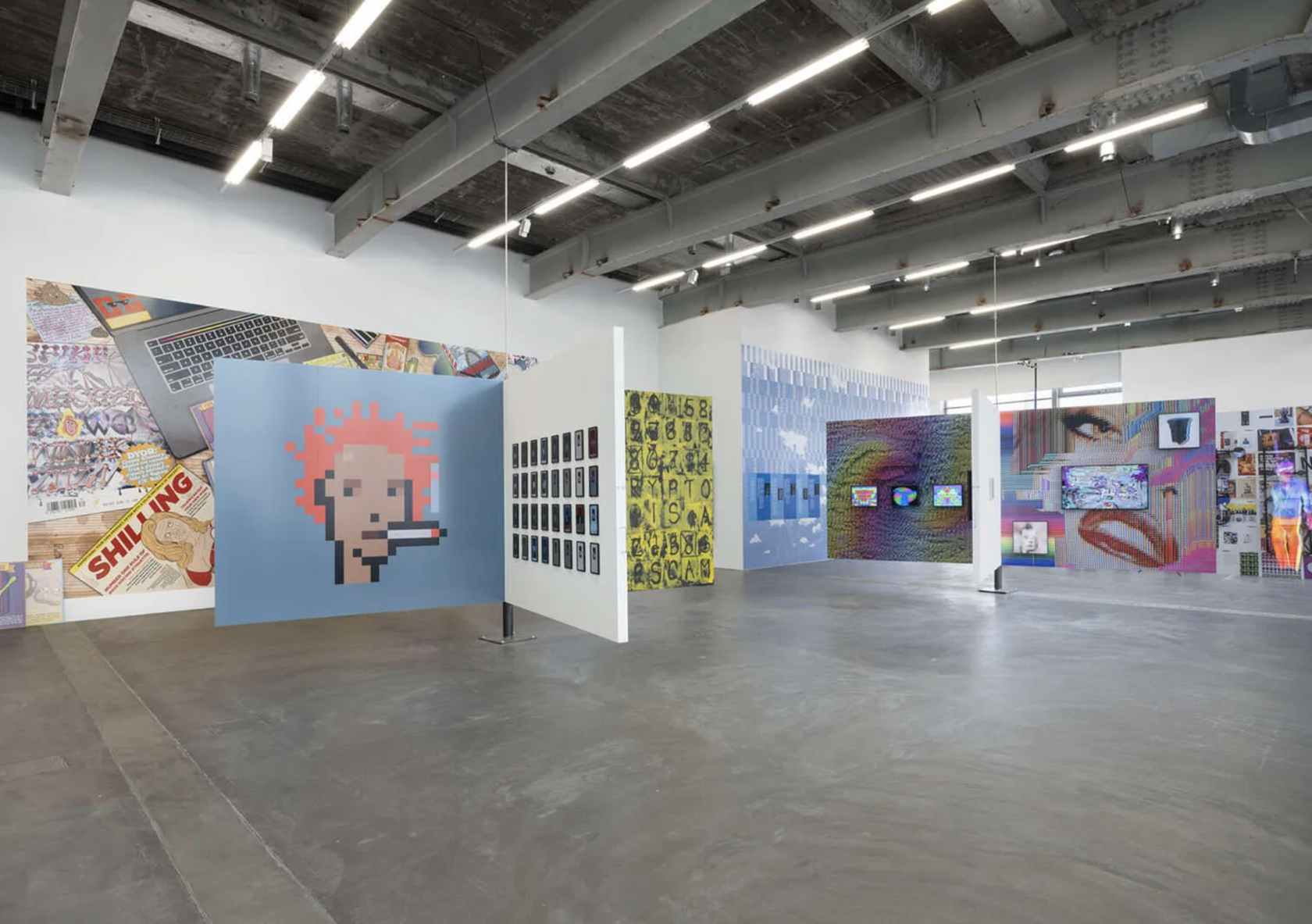The past few years have seen a dramatic surge in the intersection of art and blockchain technology, with NFTs (Non-Fungible Tokens) at the forefront of this digital renaissance. Various global art institutions have embraced this trend, curating exhibitions that not only display NFT-based artworks but also delve into the broader socio-economic and cultural narratives shaped by blockchain technology. Here’s a glimpse into some pioneering exhibitions that have marked significant milestones in the journey of NFTs from niche to mainstream.
Early Innovations and Dialogues
Hammer Projects: Simon Denny (January 2017, Los Angeles, USA) was among the first to explore the economic and social potentials of blockchain through a sculptural installation, presenting a vision of the future where technology and economy intersect with art.
In Germany, Open Codes at ZKM | Center for Art and Media (October 2017 - June 2019) extended this exploration within "The World as a Field of Data," offering a comprehensive look at how digitalization transforms our society, with blockchain playing a crucial role.

Conceptual Art Meets Cryptocurrency
The State Hermitage Museum’s exhibition, "Innovation as Artistic Technique," featured Kevin Abosch’s work (June 2018, St Petersburg, Russia), blending the realms of cryptocurrency with conceptual art, presenting a pioneering dialogue on value, art, and digital identity.
Proof of Work, curated by Simon Denny in collaboration with Distributed Gallery at Schinkel Pavillon (September 2018, Berlin, Germany), further interrogated the blockchain ecosystem, bringing together artists, developers, and theorists.

The Blockchain Aesthetic
The Artist is Online (March 2021, Berlin, Germany) by König Gallery and curator Anika Meier showcased 50 artists within the virtual blockchain world Decentraland, selling artworks as NFTs and highlighting the decentralized nature of art distribution.
At the same institution, CryptoArt - It's Not About Money (April 2021, Karlsruhe, Germany) provided a critical look at the NFT craze, questioning the valuation of digital art and the speculative market surrounding it.
Pieces of Me by Transfer Gallery (April 2021, USA), installed online in partnership with left.gallery, presented a panoramic group show focused on equitable markets and custodial care in the NFT space.

Historical Perspectives and Future Visions
The Francisco Carolinum Museum’s PROOF OF ART (June 2021, Linz, Austria) offered a brief history of NFTs, tracing their evolution and their burgeoning role in the art world.
Let’s Get Digital! at Palazzo Strozzi (May 2022, Florence, Italy) brought the NFT art revolution into focus, blurring the lines between the real and the digital with works by internationally acclaimed artists like Refik Anadol and Beeple.
DYOR at Kunsthalle Zürich (October 2022, Zürich, Switzerland), curated by Nina Roehrs, focused on the influential artists, projects, and platforms shaping the crypto art scene today. Read our article to learn more about this exhibition.

Community, Collaboration, and Decentralization
Refik Anadol’s Unsupervised: MoMA seen through the mind of a machine (November 2022, New York, USA) utilized machine learning and NFTs to reinterpret MoMA’s collection, showcasing the potential of AI in creative processes.
The HEK - Haus der Electronic Arts’ exhibition, Exploring the Decentralized Web – Art on the Blockchain (September 2023, Basel, Switzerland), reviewed the artistic implications of blockchain and Web3, presenting a forward-looking perspective on how these technologies are reshaping artistic expression and distribution.

Conclusion: A New Artistic Frontier
These exhibitions represent crucial waypoints in the evolving narrative of NFT art. They offer not just a showcase of digital art’s potential but also a forum for critical discussions on the impact of blockchain technology on artistic creation, distribution, and valuation. As the boundaries between the digital and physical worlds continue to blur, the art world’s embrace of NFTs and blockchain technology signals a broader shift towards a more inclusive, decentralized, and democratized artistic ecosystem.
